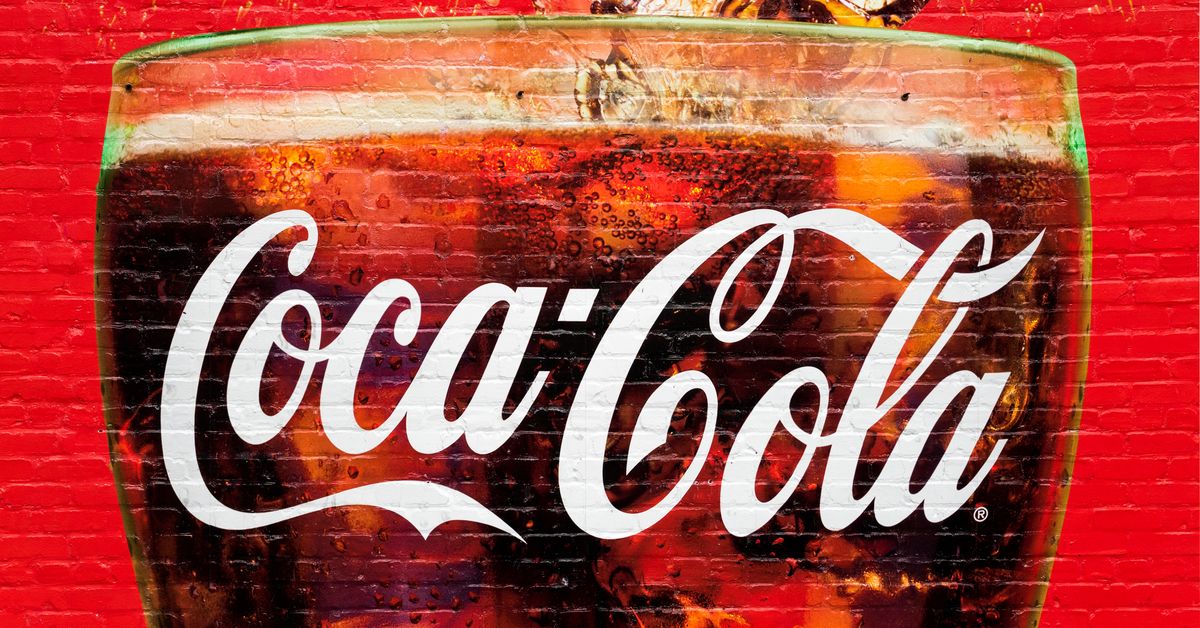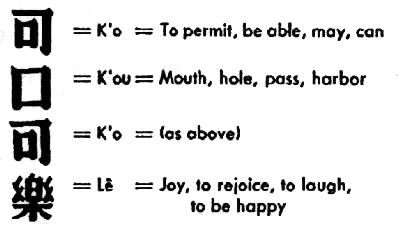When Coca-Cola first entered the Chinese market in 1928, it had no official representation of its name in Mandarin. It needed to find four Chinese characters whose pronunciations approximated the sounds "ko-ka-ko-la" without producing a nonsensical or adverse meaning when strung together as a written phrase. (Written Chinese employs about 40,000 different characters, of which about 200 are pronounced with sounds that could be used in forming the name "ko-ka-ko-la.") While Coca-Cola was searching for a satisfactory combination of symbols to represent their name, Chinese shopkeepers created signs that combined characters whose pronunciations formed the string "ko-ka-ko-la," but they did so with no regard for the meanings of the written phrases they formed in doing so. The character for wax, pronounced "la," was used in many of these signs, resulting in strings that sounded like "ko-ka-ko-la" when pronounced but conveyed nonsensical meanings such as "female horse fastened with wax," "wax-flattened mare," or "bite the wax tadpole" when read.
Coca-Cola had to avoid using many of the 200 symbols available for forming "ko-ka-ko-la" because of their meanings, including all of the characters pronounced "la." They compromised by opting for the character lê, meaning "joy," and approximately pronounced as "ler." The transliteration of the name "Coca-Cola" it finally settled on used the following characters:
This representation literally translated as "to allow the mouth to be able to rejoice," but it acceptably represented the concept of "something palatable from which one receives pleasure." It was the real thing, with no wax tadpoles or female horses, and Coca-Cola registered it as its Chinese trademark in 1928.
Both this advertising tale and the apocryphal story about the Chevy Nova's sales failure in Spanish-speaking countries are often cited as examples of the hubris of American corporations who fail to take cultural differences (specifically language use) into account when marketing their products in foreign countries. Both examples are untrue, and in this case the claim is especially egregious, as few companies can match Coca-Cola's amazing history of successfully adapting their product and marketing techniques to meet the demands of a wide variety of global markets.



